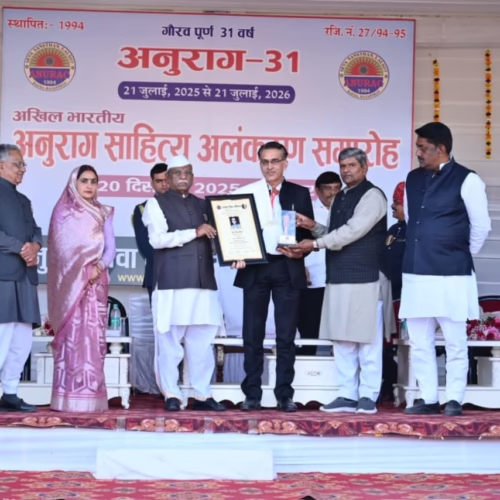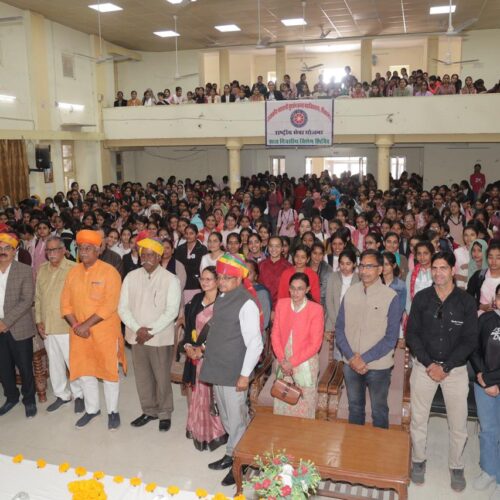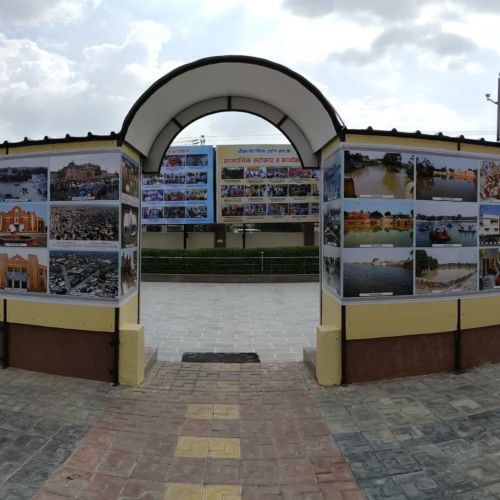
Artist impression showing an F-110 frigate at sea. First ship-in-class “Almirante Bonifaz” will be the first vessel in the world to take the AN/SPY-7 radar to sea. Lockheed Martin image.
Lockheed Martin SPY-7 Radar Hits Milestone For Spain’s F-110 Frigate
Lockheed Martin and Navantia Sistemas have revealed that the AN/SPY-7(V)2 solid-state S-band radar selected to equip the Spanish Navy’s new F-110 Bonifaz class frigates has gone through its Critical Design Review (CDR) milestone and transitioned into its production phase.
Meanwhile, a SPY-7 engineering development model (EDM) is shortly to begin testing at Lockheed Martin Rotary & Mission Systems’ Moorestown facility in New Jersey as part of an integration and test facility for the F-110 combat system core.
Intended to replace the F-80 Santa María class frigates, the F-110 design is intended to provide the Armada Española with multi-mission surface combatant marrying a primary anti-submarine warfare mission with additional anti-air warfare capability. Navantia was awarded a five-ship manufacture contract in April 2019, with first-of-class Almirante Bonifaz (F-111) scheduled for delivery in 2028.
Navantia Sistemas has assumed the role of combat system design agent for the F-110 program, and is providing the indigenous Sistema de Combate de los Buques de la Armada (SCOMBA) combat management system (CMS). SCOMBA will integrate with the AN/SPY-7(V)2 radar and the International Aegis Fire Control Loop (IAFCL) being supplied by Lockheed Martin under a US government Foreign Military Sales contract.
The AN/SPY-7(V) radar family is derived from the Long Range Discrimination Radar previously developed by Lockheed Martin under contract to the US Missile Defense Agency (MDA). The AN/SPY-7(V)2 variant has been scaled to meet the specific mission needs of the F-110 program. The AN/SPY-7 (V)1 is being developed for Japan’s Aegis System Equipped Vessel or ASEV and the AN/SPY-7(V)3 is under development for the Canadian Surface Combatant or CSC.
Addressing a joint media roundtable on 11 June, Mike Koch, Lockheed Martin’s senior manager for European mission systems, disclosed that AN/SPY-7(V)2 had been taken through CDR at the end of May in a series of technical sessions involving Navantia, Lockheed Martin, the Spanish Navy, the US Navy and the MDA.
“It’s a very significant milestone for the program. Those sessions occurred at our facilities in Moorestown, New Jersey, and encompassed a full review of the design, the status of integration and test, and the readiness of the system for production.
Mike Koch, Lockheed Martin’s senior manager for European mission systems
“During that review we validated all of our radar technical performance measures [and] that they’re on track, we validated that the design aspects are sound, and that they will support the mission requirements of the Spanish Navy.”
He continued: “During this week, in Madrid, we’re holding executive sessions with the Ministry of Defence, and then we’ll be working with them over the coming weeks to formally close the CDR milestone.”
With the completion of the CDR, and finalisation of the radar system design, the AN/SPY-7(V)2 will now transition into full-rate manufacture to meet hardware delivery dates for Navantia’s F-110 program schedule. “Production has now begun, and we are on track to support system deliveries starting later next year,” Koch said.
The EDM, which completed production at the end of 2023, is currently going through near-field testing. This demonstrator system is planned to start live tracking events later this year as part of the Aegis-SCOMBA Integration Center (ASIC) already established at Moorestown, said Koch. “This where we are bringing together the SCOMBA [CMS] along with the Aegis weapon system [and] the SPY-7 radar. So we will be able to test that end-to-end combat system capability,”
According to Cristina Abad, director of Navantia Sistemas number of combat system integration test events have already been held at the ASIC facility to demonstrated that SCOMBA and IAFCL can exchange tracks. “The next steps,” she said, “are to install in 2025 the Aegis tactical programs in Navantia Sistemas’ land-based test site in Spain to perform integration testing of both the Aegis and SCOMBA systems.”
Koch added: “This [integration] is something of a novel concept [as] it’s actually the first time that Lockheed Martin is not the combat system engineering agent for an Aegis weapon system,” Koch explained. “Navantia Sistemas has that role, and SCOMBA is the lead combat system here…the concept of the International Aegis Fire Control Loop allows us to encapsulate the Aegis weapon system and interface with an international combat management system.“
“It’s been in development for several years, and it’s part of our Aegis Common Source Library.”
The first AN/SPY-7(V)2 coming into Spain will arrive in 2026 to equip the Spanish Navy’s Centro de Integración de Sistemas en Tierra (CIST) land-based test facility in Rota. The system delivered to the CIST will be integrated into a sensor mast structure representative of that to be fitted to the F-110 frigates. “This will allow integration and testing to be performed for the SPY-7 radar in a coastal/maritime environment together with the other radars and sensors that will equip the ship,” said Abad.
Almirante Bonifaz will be the first vessel in the world to take the AN/SPY-7 radar to sea. “Positive results from land-based integration and testing are essential to proceed with the first integration and test of the SPY-7 radar on board F-111, which is planned for 2027,” Abad said.
It was at one stage envisioned that Spanish systems house Indra would partner with Lockheed Martin to supply digital transmit/receive modules to populate the AN/SPY-7(V)2 array. However, this plan has now changed, Koch said. “It started out as a technology collaboration for [Indra] to develop some of these solid-state radar technologies. Unfortunately, those technologies weren’t ready to support the shipbuilding milestones for F-110.“
“So we’ve pivoted off that model, and are working with Indra now to build components of our SPY-7 radar. They’re going to be receiving purchase orders from us in the coming months to build elements of the sub-array suite [as] build-to-print.”















Add Comment